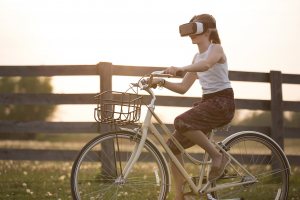 The term “virtual reality” has been around for quite some time, with elements of what we now know as virtual reality appearing as early as the 1860s. But now, interactive experiences in a simulated environment have gone through leaps and bounds especially with the advancement of technology.
The term “virtual reality” has been around for quite some time, with elements of what we now know as virtual reality appearing as early as the 1860s. But now, interactive experiences in a simulated environment have gone through leaps and bounds especially with the advancement of technology.
The now Facebook-owned company Oculus catapulted virtual reality back into people’s consciousness when they released their virtual reality headset called the Oculus Rift. Created primarily to provide an immersive gaming experience for end users, many other businesses have jumped on the VR bandwagon and have found applications for virtual reality in other industries.
Healthcare
The healthcare industry has adapted virtual reality to aid with many processes. Virtual reality development has allowed medical and dentistry students to practice surgical procedures with a virtual patient in a risk-free environment. The use of virtual reality also allows instructors the freedom to control the simulation; this makes it easier for students to be exposed to different scenarios.
VR headsets like the Oculus Rift have also helped with the administration of vaccines. Hermes Pardini Labs, Ogilvy Brasil, and Lobo used virtual reality to transport children into an immersive experience that helps reduce the discomfort upon the injection of vaccines.
Archaeology
The world of archaeology and museums have also started tapping into using virtual and augmented reality in their various practices. Displaying archaeological finds and opening historical sites to the public can often be very risky. But with the advent of virtual reality, artifacts and sites of historic significance can be appreciated on a global scale without being physically affected.
A new virtual reality experience made possible by Experius VR and Curiosity Stream has allowed for the preservation of Queen Nefertari of Egypt’s tomb. This tomb contains walls of beautiful paintings that risk deterioration should it be opened up for site tours. Through the virtual tour, the tomb avoids being exposed to humidity, fungi and bacteria, aiding in its preservation efforts.
Military
The US armed forces constantly run simulations to help train soldiers for various situations before declaring them fit for deployment. Using virtual reality gear, troops are trained to work together and utilize all the skills that they have to learn in a lifelike simulation before they are allowed to use live ammunition and other tactical equipment.
Likewise, soldiers who come home from deployment may often experience post-traumatic stress disorder (PTSD). This is especially common among war veterans. To help treat disorders such as PTSD, virtual reality tech has been used to expose patients with traumatic stimuli while remaining in a safe environment. Having a great amount of control during the VR exposure therapy allows for a safer recovery for war veterans, helping them take back control of their lives.
Education
Teachers and students have benefited greatly from the invention of virtual reality technology. Teachers are beginning to use VR gear to provide a better learning experience for students through guided virtual tours of faraway historic places. They also use virtual reality to provide engaging visual aids to teach specific concepts, especially in the field of science. This helps facilitate faster cognitive learning among students.
